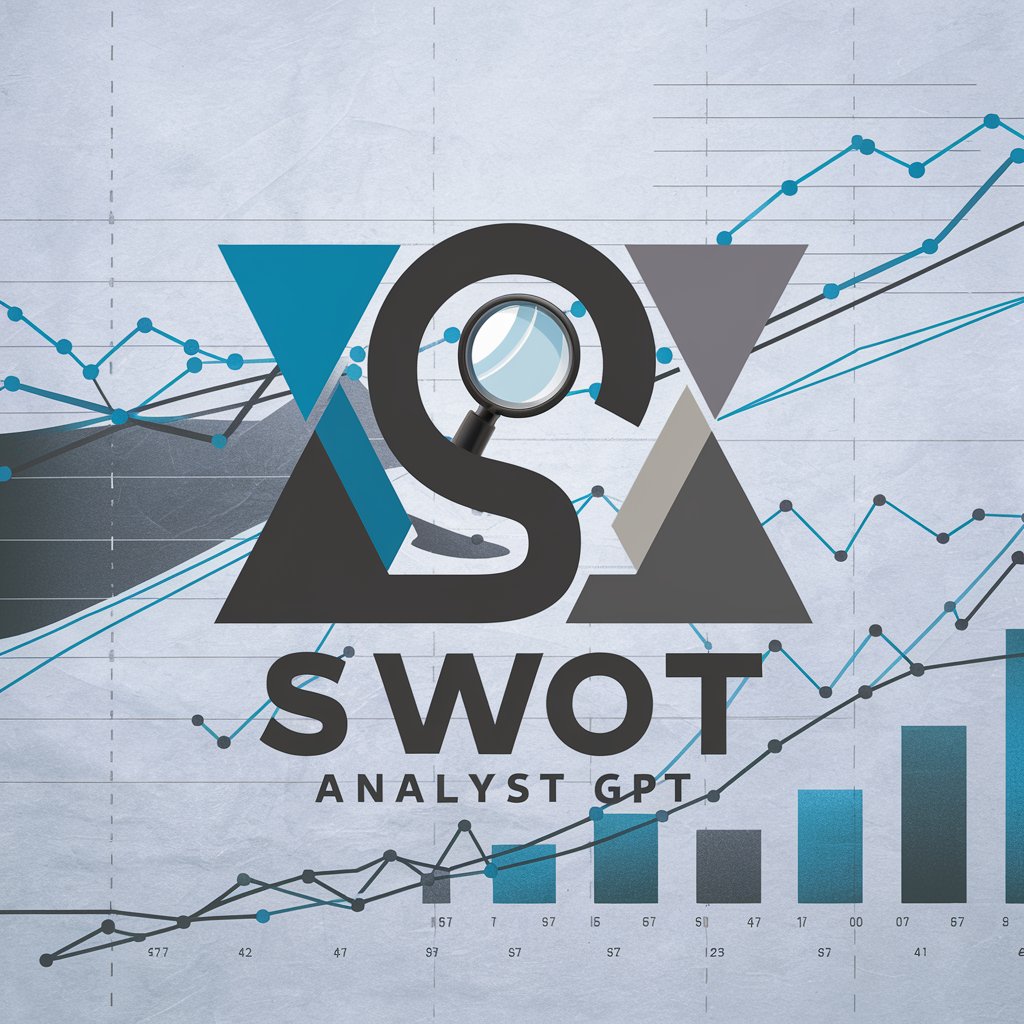
SWOT Analysis - SWOT Analysis Tool

Welcome to SWOT Analysis! Let's identify your strengths and opportunities.
Empower decisions with AI-driven SWOT Analysis
What are the key strengths of your business or project?
Can you identify the main weaknesses you are facing?
What opportunities do you see in the current market?
Are there any threats that could impact your success?
Get Embed Code
SWOT Analysis Overview
SWOT Analysis is a strategic planning tool used to identify and understand the Strengths, Weaknesses, Opportunities, and Threats related to business competition or project planning. This framework guides users in identifying internal and external factors that could impact their objectives. The design purpose of SWOT Analysis is to provide a clear and concise overview of the competitive landscape and internal capabilities, enabling organizations or individuals to make informed decisions. An example of its application could be a startup evaluating its market entry strategy. The startup would use SWOT to assess its innovative technology (Strength), lack of brand recognition (Weakness), emerging market trends favoring its business model (Opportunity), and the threat of established competitors (Threat). Powered by ChatGPT-4o。

Core Functions of SWOT Analysis
Assessment of Internal Capabilities
Example
Identifying a company's core competencies such as a skilled workforce or proprietary technology.
Scenario
A manufacturing firm uses SWOT to highlight its efficient production process as a strength, enabling it to produce high-quality products at lower costs compared to competitors.
Identification of External Opportunities and Threats
Example
Analyzing market trends to uncover new business opportunities or potential risks.
Scenario
A retail business conducts a SWOT analysis to identify the growing trend of online shopping as an opportunity, and the increasing rental costs in prime locations as a threat.
Strategic Decision Making
Example
Utilizing the insights from SWOT to formulate strategic plans.
Scenario
An educational institution employs SWOT to decide on expanding its course offerings in response to the high demand for online learning opportunities.
Competitive Analysis
Example
Comparing strengths and weaknesses with competitors to find a competitive edge.
Scenario
A tech startup uses SWOT for competitive analysis, identifying its rapid innovation cycle as a strength while recognizing the need to improve its customer service.
Target User Groups for SWOT Analysis Services
Business Executives
Executives use SWOT Analysis to evaluate their company's strategic position, make informed decisions on market entry, product development, and to navigate competitive landscapes.
Entrepreneurs
Entrepreneurs benefit from SWOT Analysis by identifying the strengths of their business model, potential weaknesses in their operations, market opportunities, and external threats before launching their ventures.
Marketing Professionals
Marketing professionals apply SWOT to understand the strengths and weaknesses of their marketing strategies, identify new opportunities for growth, and anticipate threats from competitors or market changes.
Project Managers
Project managers utilize SWOT Analysis to assess project feasibility, identify risks and opportunities associated with new projects, and optimize resource allocation.

How to Utilize SWOT Analysis Effectively
1
Initiate your strategic planning by exploring yeschat.ai for a no-cost trial, facilitating engagement without the necessity of account creation or premium subscriptions.
2
Identify the subject of your SWOT analysis, be it a business, project, or personal career path, to focus your evaluation effectively.
3
Gather comprehensive data and insights related to the Strengths, Weaknesses, Opportunities, and Threats of your subject to ensure a thorough analysis.
4
Analyze and interpret the collected information to determine how internal capabilities and external factors might impact your subject's objectives.
5
Use the insights from your analysis to formulate strategic plans that leverage strengths and opportunities while mitigating weaknesses and threats.
Try other advanced and practical GPTs
Unicorn Finder
Discover Unicorn Startups with AI

Coupon Code Buddy
Unlock savings with AI-powered coupons

Historical Debater
Converse with history, powered by AI

Epic Narrator 4.0
Craft Epic RPG Adventures with AI

Gift Guide
AI-powered personalized gift assistance

Curioso Experto
Empowering curiosity with AI.

WOD Finder
AI-Powered CrossFit Coach

Photography friend
Elevate Your Photography with AI-Powered Insights

Density Solver
Solve density problems with AI precision.

Search Guy
Unlocking Information with AI Power

Schema Assistant
Elevate SEO with AI-powered Schema Markup

Meal Planner
Tailored Meals at Your Fingertips

Frequently Asked Questions about SWOT Analysis
What is SWOT Analysis?
SWOT Analysis is a strategic planning tool used to identify and understand the Strengths, Weaknesses, Opportunities, and Threats related to a business or project.
How can SWOT Analysis benefit my organization?
It helps in recognizing your organization's internal strengths and weaknesses, while also identifying external opportunities and threats, facilitating informed decision-making.
Can SWOT Analysis be used for personal development?
Absolutely, individuals can use SWOT Analysis to assess their personal skills, identify areas for improvement, seize opportunities for growth, and recognize external threats to their goals.
How often should SWOT Analysis be conducted?
It's recommended to perform SWOT Analysis periodically, or when there's a significant change in the operational environment, to ensure strategies remain relevant and effective.
What's the best way to prioritize the elements identified in a SWOT Analysis?
Prioritize based on their potential impact on your goals, considering both the feasibility of addressing them and the urgency of their influence on your objectives.





